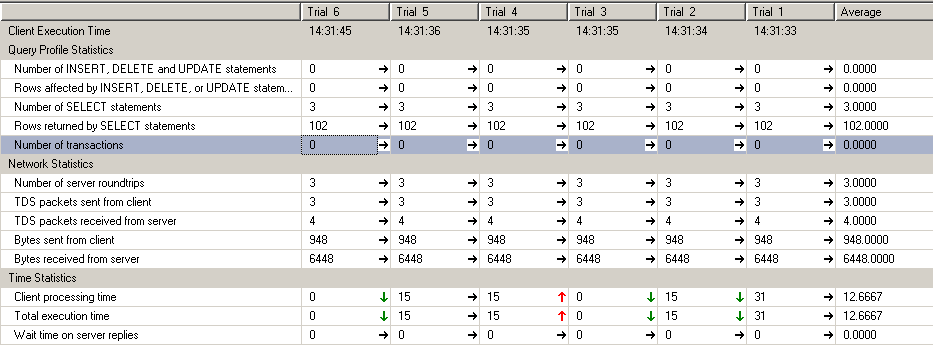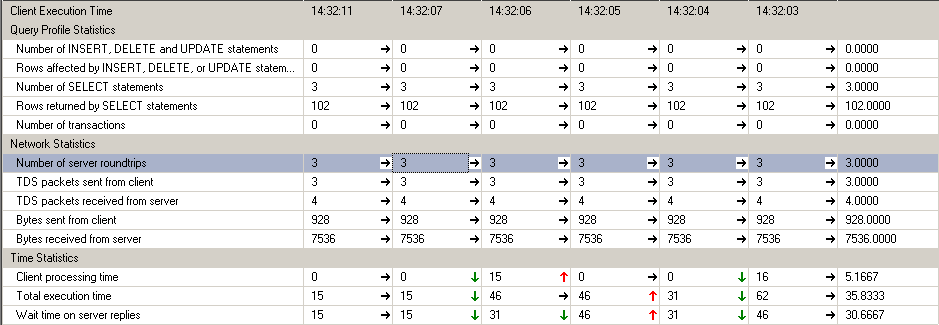SQLSERVER2008中CTE的Split与CLR的性能比较
时间:2015-02-22 19:48 来源:linux.it.net.cn 作者:IT
我们新建一个DataBase project,然后建立一个UserDefinedFunctions,Code像这样:
1: /// <summary>
/// SQLs the array.
/// </summary>
/// <param name="str">The STR.</param>
/// <param name="delimiter">The delimiter.</param>
/// <returns></returns>
/// 1/8/2010 2:41 PM author: v-pliu
[SqlFunction(Name = "CLR_Split",
FillRowMethodName = "FillRow",
TableDefinition = "id nvarchar(10)")]
public static IEnumerable SqlArray(SqlString str, SqlChars delimiter)
{
if (delimiter.Length == 0)
return new string[1] { str.Value };
return str.Value.Split(delimiter[0]);
}
/// <summary>
/// Fills the row.
/// </summary>
/// <param name="row">The row.</param>
/// <param name="str">The STR.</param>
/// 1/8/2010 2:41 PM author: v-pliu
public static void FillRow(object row, out SqlString str)
{
str = new SqlString((string)row);
}
然后Bulid,Deploy一切OK后,在SSMS中执行以下测试T-sql:
DECLARE @array VARCHAR(max)
SET @array = '39,15,93,68,64,43,90,58,39,9,26,26,89,47,91,57,98,16,55,9,63,29,69,16,41,76,34,60,68,64,61,53,32,30,11,72,57,63,36,43,22,14,60,38,24,5,66,26,26,21,22,99,55,18,7,10,46,76,27,88,9,29,89,75,48,72,94,59,35,19,0,35,79,11,87,49,68,30,91,35,9,7,34,47,41,61,98,13,22,1,26,80,35,48,34,92,24,85,90,51' SELECT id FROM dbo.CLR_Split(@array,',')
我们来看它的Client Statistic:
接着我们执行测试T-sql使用相同的array:
DECLARE @array VARCHAR(max)
SET @array = '39,15,93,68,64,43,90,58,39,9,26,26,89,47,91,57,98,16,55,9,63,29,69,16,41,76,34,60,68,64,61,53,32,30,11,72,57,63,36,43,22,14,60,38,24,5,66,26,26,21,22,99,55,18,7,10,46,76,27,88,9,29,89,75,48,72,94,59,35,19,0,35,79,11,87,49,68,30,91,35,9,7,34,47,41,61,98,13,22,1,26,80,35,48,34,92,24,85,90,51'
SELECT item FROM strToTable(@array,',')
CTE实现的Split function的Client statistic:
通过对比,你可以发现CLR的performance略高于CTE方式,原因在于CLR方式有Cache功能,并且把一个复杂的运算放到程序里比DataBase里更加高效。
(责任编辑:IT)
| 我们新建一个DataBase project,然后建立一个UserDefinedFunctions,Code像这样: 1: /// <summary> /// SQLs the array. /// </summary> /// <param name="str">The STR.</param> /// <param name="delimiter">The delimiter.</param> /// <returns></returns> /// 1/8/2010 2:41 PM author: v-pliu [SqlFunction(Name = "CLR_Split", FillRowMethodName = "FillRow", TableDefinition = "id nvarchar(10)")] public static IEnumerable SqlArray(SqlString str, SqlChars delimiter) { if (delimiter.Length == 0) return new string[1] { str.Value }; return str.Value.Split(delimiter[0]); } /// <summary> /// Fills the row. /// </summary> /// <param name="row">The row.</param> /// <param name="str">The STR.</param> /// 1/8/2010 2:41 PM author: v-pliu public static void FillRow(object row, out SqlString str) { str = new SqlString((string)row); } 然后Bulid,Deploy一切OK后,在SSMS中执行以下测试T-sql: DECLARE @array VARCHAR(max) SET @array = '39,15,93,68,64,43,90,58,39,9,26,26,89,47,91,57,98,16,55,9,63,29,69,16,41,76,34,60,68,64,61,53,32,30,11,72,57,63,36,43,22,14,60,38,24,5,66,26,26,21,22,99,55,18,7,10,46,76,27,88,9,29,89,75,48,72,94,59,35,19,0,35,79,11,87,49,68,30,91,35,9,7,34,47,41,61,98,13,22,1,26,80,35,48,34,92,24,85,90,51' SELECT id FROM dbo.CLR_Split(@array,',') 我们来看它的Client Statistic:
接着我们执行测试T-sql使用相同的array: DECLARE @array VARCHAR(max) SET @array = '39,15,93,68,64,43,90,58,39,9,26,26,89,47,91,57,98,16,55,9,63,29,69,16,41,76,34,60,68,64,61,53,32,30,11,72,57,63,36,43,22,14,60,38,24,5,66,26,26,21,22,99,55,18,7,10,46,76,27,88,9,29,89,75,48,72,94,59,35,19,0,35,79,11,87,49,68,30,91,35,9,7,34,47,41,61,98,13,22,1,26,80,35,48,34,92,24,85,90,51' SELECT item FROM strToTable(@array,',')
CTE实现的Split function的Client statistic:
通过对比,你可以发现CLR的performance略高于CTE方式,原因在于CLR方式有Cache功能,并且把一个复杂的运算放到程序里比DataBase里更加高效。 |

